vue父子組件間引用之$parent、$children
vue中提到【父子組件】,則一定會想到我們常用的父子組件通信:props+$on()、$emit() ,如圖:
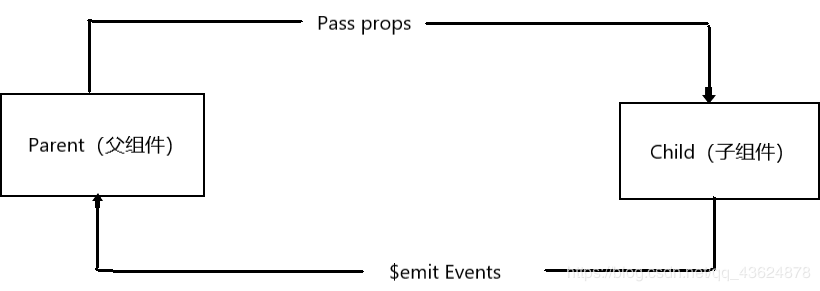
也就是說,雖然在一般情況下,子組件是不能引用父組件或者Vue實例的數(shù)據(jù),但是對于在開發(fā)中出現(xiàn)的“數(shù)據(jù)需要在組件中來回傳遞”,我們最簡單的解決辦法就是通過props(和v-on)將數(shù)據(jù)從父組件傳到子組件,再用$emit將數(shù)據(jù)從子組件傳到父組件,以此循環(huán)引用。
但是在另一些場景下,我們可能想要比如(在父組件中)拿到子組件對象,然后直接操作其中數(shù)據(jù),去實現(xiàn)一些功能,比如方法的調用。

有時候我們需要父組件直接訪問子組件、子組件直接訪問父組件,或者子組件訪問根組件:
父組件訪問子組件:使用$children或$refs reference 子組件訪問父組件:使用$parent父子組件的訪問方式之:$children
children很特別,查閱資料可以發(fā)現(xiàn):this.$children是一個數(shù)組類型,它包含了所有子組件對象:
<body><div id='app'><mxc></mxc><mxc></mxc><mxc></mxc><button @click='btnClick'>顫抖吧</button></div><template id='mxc'><div>我是子組件啊</div></template><script>const app=new Vue({el:’#app’,data:{message:’你好’},methods:{btnClick(){console.log(this.$children)}},components:{mxc:{template:’#mxc’,methods:{showMessage(){console.log(’mxcnb’)}}}}})</script></body>
點擊(父組件)按鈕之后:
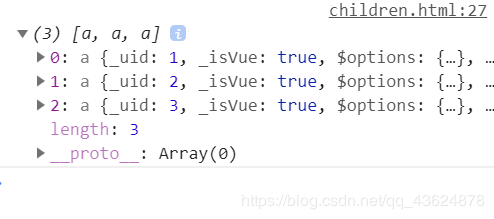
我們還可以通過循環(huán)拿到所有子組件數(shù)據(jù):
<body><div id='app'><mxc></mxc><mxc></mxc><mxc></mxc><button @click='btnClick'>顫抖吧</button></div><template id='mxc'><div>我是子組件啊</div></template><script>const app=new Vue({el:’#app’,data:{message:’你好’},methods:{btnClick(){console.log(this.$children)for(let c of this.$children){console.log(c.name)}}},components:{mxc:{template:’#mxc’,data(){return{name:’我是子組件的name’}},methods:{showMessage(){console.log(’mxcnb’)}}}}})</script></body>
點擊(父組件)按鈕之后:
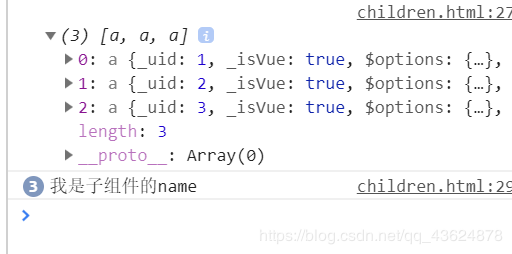
因為是數(shù)組,所以我們可以通過比如:this.$children[2]來拿到第三個子組件的數(shù)據(jù)。但是這么做有一個問題:比如開發(fā)時突然在這三個子組件中又插入了一個子組件(可能相同,也可能不同),這時候【2】就不再是我們需要的了。。。
所以我們可以用vue-DOM之光:$refs :
<body><div id='app'><mxc></mxc><mxc></mxc><mxc ref='aaa'></mxc><button @click='btnClick'>顫抖吧</button></div><template id='mxc'><div>我是子組件啊</div></template><script>const app=new Vue({el:’#app’,data:{message:’你好’},methods:{btnClick(){console.log(this.$refs)console.log(this.$refs.aaa)}},components:{mxc:{template:’#mxc’,data(){return{name:’我是子組件的name’}},methods:{showMessage(){console.log(’mxcnb’)}}}}})</script></body>
點擊(父組件)按鈕之后:

為什么叫“DOM之光”呢?因為它和原生JS中的document.querySelector(’xxx’)功能一樣,它可以在vue中獲取元素/匹配組件
子訪問父:$parent
<body><div id='app'><mxc></mxc></div><template id='mxc'><div>我是子組件啊</div><button @click='btnClick'>更加顫抖的child</button></template><script>const app=new Vue({el:’#app’,data:{message:’你好’},components:{mxc:{template:’#mxc’,methods:{btnClick(){console.log(this.$parent)}}}}})</script></body>
如法炮制:
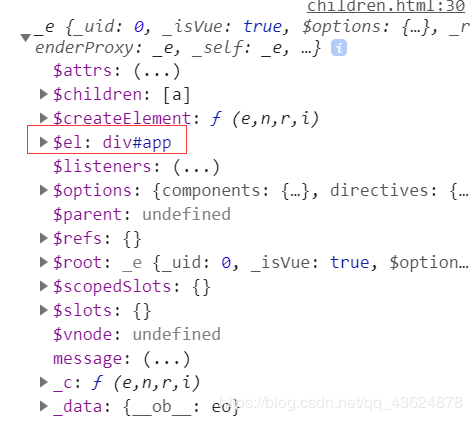
圖中el屬性在有些瀏覽器(或添加了vue插件)會顯示未Vue?因為當前子組件的父組件就是vue實例啊!
(但是在實際中$parent用的非常少——考慮到耦合度的原因)
子組件訪問根組件:$root
<body><div id='app'><mxc></mxc></div><template id='mxc'><div><div>我是mxc組件</div><cdn></cdn></div></template><template id='mxca'><div><div>我是子子組件啊</div><button @click='btnClick'>巨顫祖child</button></div></template><script>const app=new Vue({el:’#app’,data:{message:’你好’},components:{mxc:{template:’#mxc’,data(){return{name:’我是中間子組件的name’}},components:{cdn:{template:’#mxca’,methods:{btnClick(){console.log(this.$parent.name)console.log(this.$root.message)}}}}}}})</script></body>
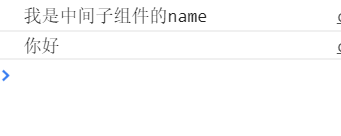
總結
到此這篇關于vue父子組件間引用:$parent、$children的文章就介紹到這了,更多相關vue父子組件間引用:$parent、$children內容請搜索好吧啦網(wǎng)以前的文章或繼續(xù)瀏覽下面的相關文章希望大家以后多多支持好吧啦網(wǎng)!
相關文章:
1. 不要在HTML中濫用div2. Vue3使用JSX的方法實例(筆記自用)3. 使用css實現(xiàn)全兼容tooltip提示框4. CSS代碼檢查工具stylelint的使用方法詳解5. vue實現(xiàn)將自己網(wǎng)站(h5鏈接)分享到微信中形成小卡片的超詳細教程6. html清除浮動的6種方法示例7. 詳解CSS偽元素的妙用單標簽之美8. CSS3實例分享之多重背景的實現(xiàn)(Multiple backgrounds)9. JavaScript數(shù)據(jù)類型對函數(shù)式編程的影響示例解析10. 利用CSS3新特性創(chuàng)建透明邊框三角

 網(wǎng)公網(wǎng)安備
網(wǎng)公網(wǎng)安備